Historical Photos
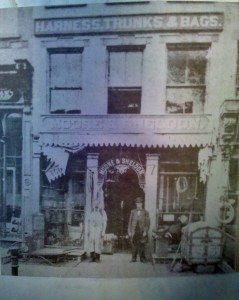
Moore & Sheldon Harness, Trunks & Bags, Utica, NY
Hattie Sheldon’s father, Ebenezer, moved his country harness shop from rural Burlington to Utica in 1845. It became a successful Harness, Trunk and Bag business that remained in the first location, shown at left, for 85 years. Through many partnerships and successes, the business lasted 150 years until its closing in 2006.

Baggs Hotel in 1813, Utica, NY
Before the esteemed Bagg’s Hotel, an establishment called Bagg’s Tavern existed in a log structure that dates back to 1794. Accommodations were needed for people passing through Utica whose horses needed shoes and other care. This need arose after 1800 when the Seneca Turnpike Company opened roads to the west. Before actual hotels, the word hostelries described such places that provided bed and board to “sojourners.” Today, Bagg’s Square Memorial Park is located at the same location as the old landmark hotel.
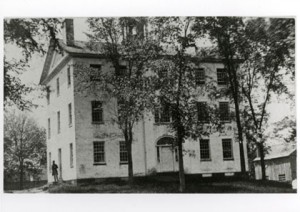
Amherst Academy, Amherst, MA
Image: Jones Library Special Collections
After substandard schools motivated town leaders to make changes, this secondary education school accepted and taught its first students in 1815. It rose steadily in reputation for appropriately readying students for college. The school offered classical curriculum, but women were educated separately than men. School teacher training commenced through a new division in 1827. The school declined when public education rose in stature. It closed in 1861.
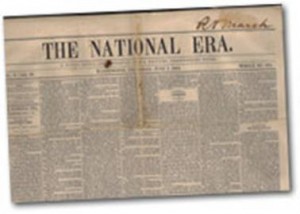
The publication of Uncle Tom’s Cabin
Before it was published as a novel, Uncle Tom’s Cabin was serialized in The National Era, an antislavery magazine. First appearing on June 5, 1851, each successive installment had readers clamoring for more. This popularity helped promote the two-volume novel which became a best seller in America and abroad after translation into over sixty languages. Many sources credit the character-driven story as the most influential novel in American history. Its impact was and is felt worldwide, as well, for motivating emancipation efforts.
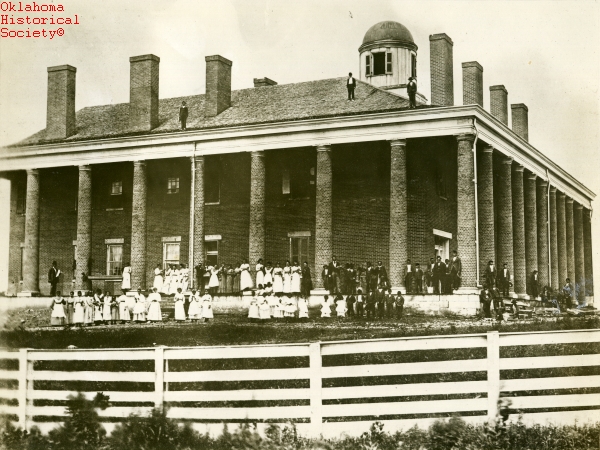
Cherokee Female Seminary, Park Hill, Cherokee Nation
Photo courtesy of the Grant Foreman Collection, Oklahoma Historical Society Research Division
The Cherokee National Council prioritized education for its youth, resulting in plans to build two high school seminaries. Opening in 1851, the female seminary brick building near Park Hill was of modified Greek Doric architecture. It was a boarding school with spacious student rooms on the second floor, which were more expensive than the smaller, more conservative ones on the third floor near the infirmary. Financial problems forced the schools to close, and then the Civil War intervened. Classes resumed years later before fire destroyed the female seminary in 1887. Some of the tall, impressive columns survived and were incorporated into the architecture of other public buildings as a memorial.
Utica Female Academy
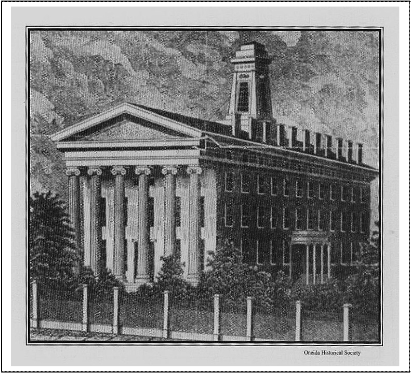
This first Utica Female Academy building was completed in 1838.
Photo: Oneida County Historical Society, Utica, NY
In 1827, boys and young men in Utica, NY had several good schools from which to choose. That was not the case for girls. At the urging of many parents who wanted their daughters educated, makeshift classes began in 1827 at the United States Hotel. Donations poured in and funded an impressive multi-story Greek Revival building that opened in 1838. Five departments of study were offered to young women. By 1854, the academic year included two terms of 22 weeks each with an 8 week vacation at the end of the second term. Each young lady who boarded at the school furnished her own towels and dinner napkins. Other charges included fees for washing, lights and pew rental at 75 cents per quarter. This information was provided by the Oneida County Historical Society in Utica, NY.